Leica Love
I’ve had a love / hate relationship with the Leica rangefinders for years now. I had one of the first M8’s when they were released eons ago. I had all the problems that you read about; blooming, noise and the dreaded magenta cast. For all it’s problems though, it was able to take beautiful photos. I used it for a book project in Italy right after I got it and was amazed by how it seemed to just put a frame around whatever I was looking at.
As much as I loved it though, I found it spending much of its life in a bag and not being used that much. My commercial assignments required an SLR, big buffers, quick writing speeds and the ability to shoot tethered to a computer, so I sold the whole M system to fund the purchase of a Phase One digital back.
Fast forward a few years and with a big trip to Russia looming, I felt myself yearning to have the M8 back, some of my favorite shots were made in Paris with an old M6 and a 50mm lens. I purchased my second M8, knowing about the problems and limitations. Of course the M8.2 was introduced 3 months after I bought my stock one. Great camera, wonderful images, but again I wasn’t sure if it was a keeper.
Enter the M9. Wow, this surely must be the Holy Grail of Leicas. I had to had one, I traded in the M8 and put my name on the list and waited, and waited. I was lucky, I got mine last Nov, so I must have been one of the first people to get it. I loved the accuracy and the full frame sensor and finally I could get rid of those silly IR filters.
But, as the economy slowed down, I wondered if the idea of having all that cash tied up in a camera was a good idea. I love rangefinders and street photography, but that’s not how I earn my living as a photographer. I use lights and assistants and stylists and computers, all things where this little camera is not at it’s best.
I actually considered selling the M9 and getting a used MP and going back to shooting and scanning film. Nothing is sexier than an MP, and the idea of walking around with nothing more than a pocketful of Tri-X certainly is appealing. I actually bought a used M6, intending on taking it to Europe with me. The reality though is it’s tough to travel with film these days, (thanks TSA) and the M9 sensor can out resolve any film out there. While there is a certain romance to film, it is very limiting.
I took the M9 with me, and ended up falling in love. I learned that I needed to use it like a film body, I didn’t peek at the review once, and I did everything I could to make the images look film-like. I am really happy with the images and the look and feel to them. I was concentrating on making the photos look like how I envisioned them, rather than a super sharp testimony to the superiority of the sensor. I shot 90% of the images with the 35 or 50mm lenses.
I still have my big cameras, but I am taking the M9 with me a lot of the time now.
You can see more of Roger’s work HERE. Thanks Roger!
Steve
[ad#Adsense Blog Sq Embed Image]

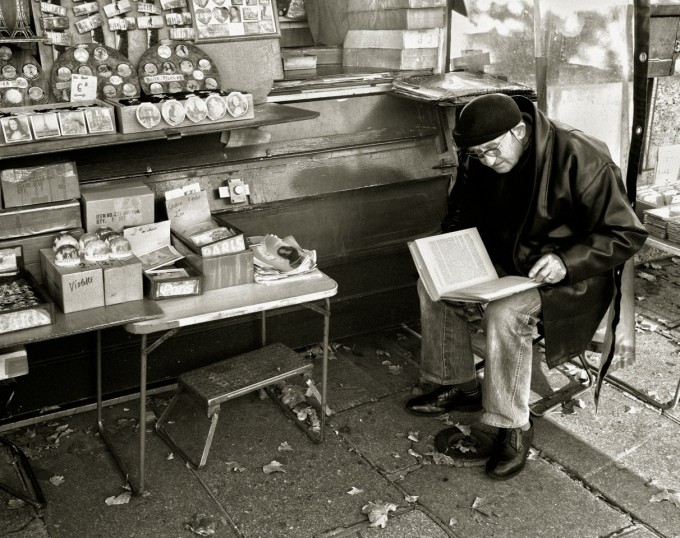
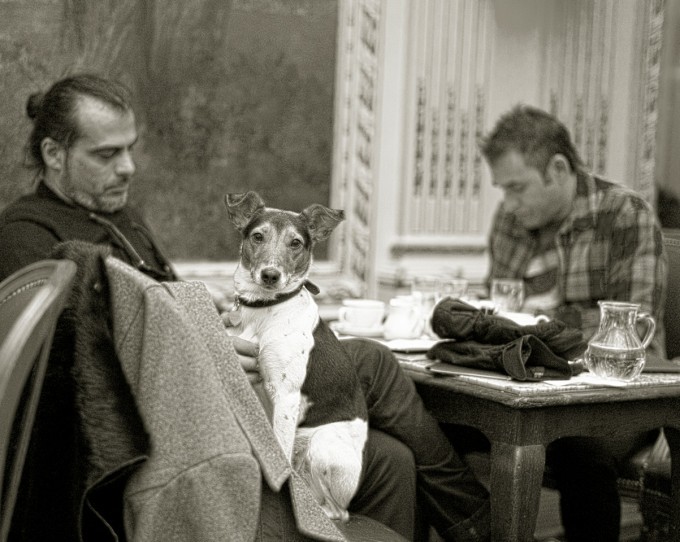
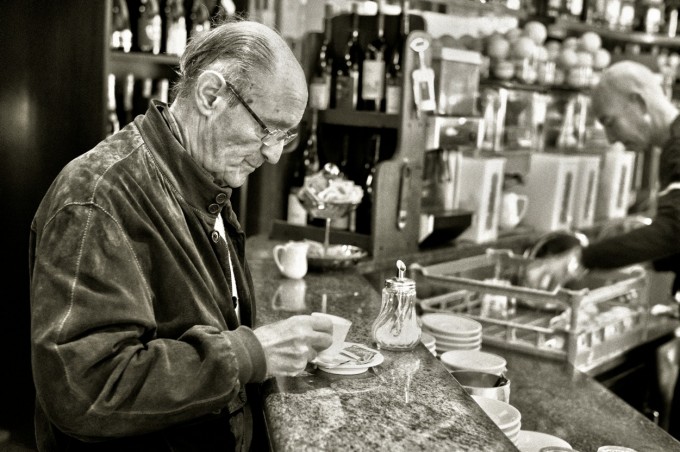
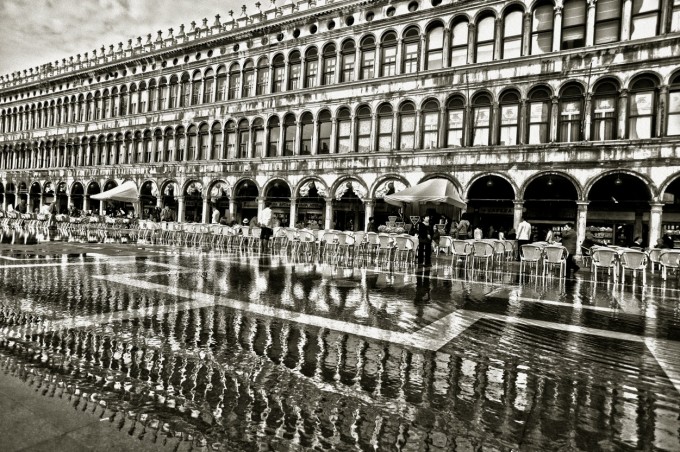
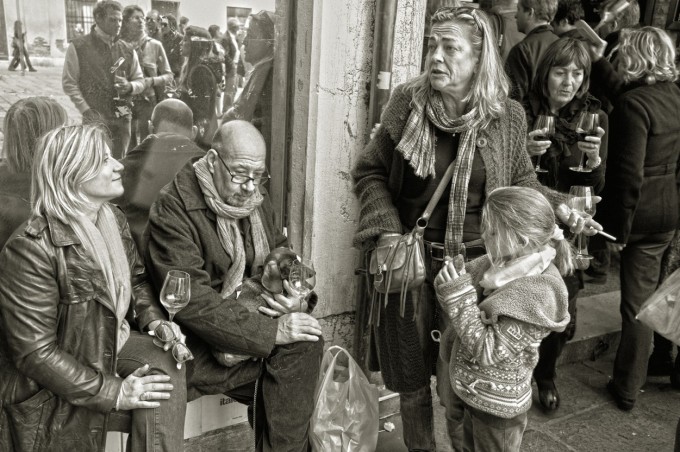
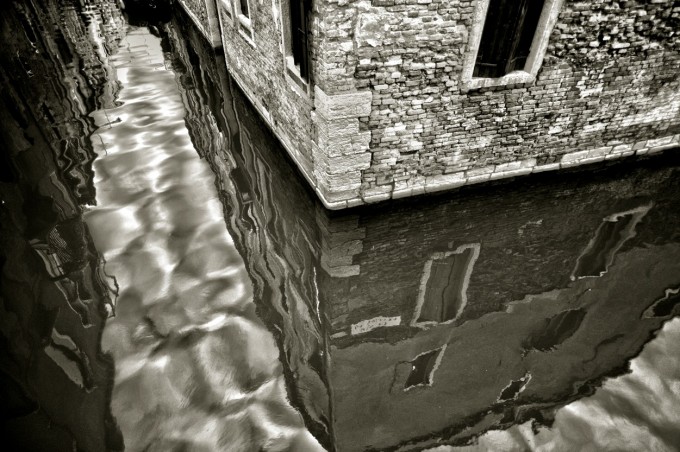
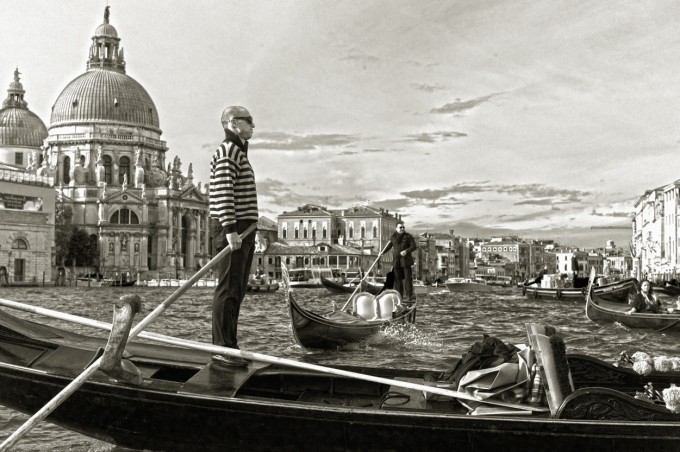


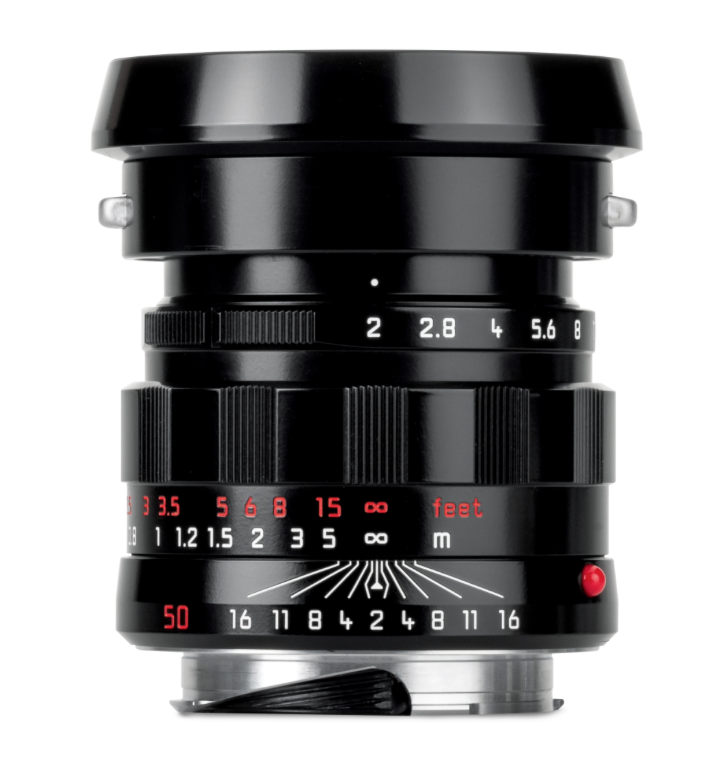
I agree with Roger when he says, “While there is a certain romance to film, it is very limiting”. The convenience and quality of the latest digital cameras can no longer be denied, from a point n shoot to an M9.
Personal preference though, continues to be utterly subjective! And in the end, it is down to the photographer and their photos…are they any good? Neither using film, or digital, or an M9 or a Holga, will change that. Just choose your favourite camera and medium….
Dramatically overprocessed. Way too much “bling” for a good photo.
Art, as always, is very subjective. Some people may like these images, some don’t..ces’t la vie.
The one thing I do know, from my experience and from anything I have seen out there, it is a waste of time to try to make M8/M9 images look like film. It just doesn’t work, in my opinion. Yes, the M9 (or many other digital cameras), may out-resolve film but who cares, really. Since when, resolution, sharpness, detail, have anything to do with whether an image can stand on its own and/or will be bought by someone and hung on a wall to be admired every day? That’s how I judge images. Will I look at this more than once, does it draw me in, does it give me anything, would I buy it, frame it?
To judge images in the context of being taken with a given camera is a waste of time. There are people taking great images with an iPhone or plastic $25 Holgas so obviously the technical part is largely secondary.
Post processing, in my opinion, is a major problem. Everyone, and I mean everyone, tends to go overboard with it. Especially for black & white, it always leads to images that are too high in contrast, have an etched look (like above) and are just sometimes painful to look at. The M8/M9 with modern lenses give very high contrast images as it is and post processing mistakes just lead to unpleasant viewing. There are too many variables and distracting options which inevitably lead to confusion and insecurity about what looks right or wrong. At least with film, once you’ve mastered your favorite, your distinct look is in the bag. You may go for low contrast negs, over-processed ones, dense, thin, more grain, less grain, etc, but with digital the tendency is to start hitting sliders, filters and presets that almost always lead to aberrations.
Erwin Puts said it right when he wrote this: “Mastering the M9 is a route not without difficulties, but inherently a pleasant quest and the results are most satisfying. Exaggerating the complications is as wrong as denying them. The M9 should be approached as a competent instrument with a strong character and philosophy, but do not neglect the limits. The camera deserves it! “
I’m another that isn’t impressed. If the idea was from him to: “I did everything I could to make the images look film-like”
Then apart from probably the first two which just look a little tonally limited, then he failed. Because none of these look like film, not even close, it doesn’t matter if we like them or not they don’t look like film.
Loo at the shot with the man sitting with the window behind and the small child, the woman on the left looks totally flat.
In fact they look very much like a first go at HDR way over the top, the M8/9 may have more resolution than film, not that you can tell from this set, because of the halo’s.
Sorry but these just don’t fulfil the photographers stated aims.
Mark Antony
Is this article for real ?
I can’t believe that someone who’s a Pro photographer would think that these photos are good
I like them. Sometimes it’s nice to think outside the box and be different. Not every person shares the same views.
I like photographers to think out side the normal too but these are not photographs
where the photographer thought outside the box when he took them, they were changed after during PP to the point where they no longer resemble a photo.
these are more of what I would class as digital art than photography, nothing wrong with that at all.
I know not everyone shares the same views and thats why I posted a comment
Good grief. When it comes to art (and photography falls in that category), different minds may differ on opinions of what they may like or not like. Why make statements that put down others when it’s a matter of opinion? Yes, your opinion is that you don’t think the photos are good. But that doesn’t mean that a “pro” must agree with you. Or disagree with you.
Roger is a pro, and a friend. Art and impression are in the eye of the beholder, and Roger has a very valid opinion. Like Steve, I like the way his shots came out. They may not sure the creative eye of everyone, but no photo is universally loved or accepted…
I totally understand Art and impression but that wasn’t my point
I should also say that my comment was not meant to offend Roger or to
be taken as off-hand or a pop at the M9.
The writing in the article does not match the photos include, Roger
talks about how he used the M9 like a film camera and wanted the
images he captured to have a film-like look to them, ok so Roger also
goes on to say that he wanted them to appear how he envisioned them, so
maybe what he produced does look like what he envisioned but they have
no hint of a film-like look about them.
The greater part of the article covers the M8 which he sold twice
because he didn’t use it and the cost of a Leica system but the
images shown could have quite easily have been taken with an M8, they
could have quite easily been taken with an iPhone for that matter.
Didn’t Roger say that he was able to take beautiful photos with an M8?
ok so as Roger points out the M8 has problems and limitations but
so too does the M9 (and most other cameras for that matter), is someone
so conscious of cost willing to pay so much just so they don’t have to use
UV/IR filter? and as Rogers say, he doesn’t want his images to appear
as a super sharp testimony to the superiority of the sensor in the M9.
Sorry but to me this article makes no sense at all
@ Jorgen
Agreed. I don’t understand the ‘convenience’ argument completely. Sure, I enjoy shooting digital for the fun but the fact that it takes me a week or longer to go through a roll of film does not worry me. In fact, its beginning to feel a lot like Christmas 😉
I can also understand that digital is more convenient than film, but when did art become something that needed to be convenient? Or is it too high-brow to call it art? To me at least, the best photography is a form of art. Though the worst would be archiving, I guess, which is necessary as well.
I haven’t had an issue bringing film through the airport. It was a breeze. you just have it hand inspected. but I understand your hesitations. The M9 is a nice camera to take with you traveling and not deal with the film. But I like film’s look a bit better. Still, the full frame on the M9 produces lovely files for travel photographyI love the compositions of these photos, but I wonder what they’d look like without the HDR? Can you possibly post them. I don’t think you need the HDR to make these look fabulous.You seem to have a lovely eye for photography. I adore the picture of the dog. Nice captures all around! Thanks so much for sharing. I always love seeing other people’s work!
I never transported film at the airport. I’m a film noob. Is there a problem if the film goes through the metal detectors, x-rays, gamma rays, etc… ?
Many thanks for your write up and your images.
Richard in Michigan
@Eric: Why would you scan your film if you want to print it?
great subject matter! have to agree on the post-processing though… for some reason, I think your attempt at making these look more like film ended up making them look particularly digital lol 🙂
for example – take the last image. the HDR processing (or whatever post processing you did) created a white halo around the dome on the left side of the image… a typical “digital” artifact in my opinion.
I love the first shot though, that one turned out great!
Great article Roger. I agree with you 100% about the M9 sensor having more resolving power than any form of film. I also find it interesting that amateurs are the ones disputing this. I live in LA and I have yet to meet a professional who still makes a claim that film is superior. They might have a nostalgic romance for it but that is all. It’s like making the argument that a 56 Mustang is far superior to the current version. Yeah… I agree there are certain style points for things of the past but if you really think hard to how the car actually PERFORMED, there is no question that the current model is superior. You might prefer the old and maybe even want the old, but that doesn’t make it any better.
The problem with most of the arguments made for film is that most are viewing the images on a computer screen of some kind. I don’t care if it’s a laptop or a 27″ Imac, the screen does not yield the same results as a print.
Here’s the test:
Take a 35mm neg of any kind, Tri-X, Ilford FP4, Agfa 25, whatever your heart’s desire, and blow it up to 20 x 30. What you will see is grain and lots of it. If grain is what you want then fine, but don’t confuse grain with “resolving power” and just because a neg has more “grain” or information than a digital file doesn’t make it superior. I’ve blown up negatives to 20×30 and digital files to 20×30 and the digital files are superior 100% of the time. I’ve done this with an enlarger as well as a 4000 dpi scan. The results are the same if done properly.
Bye the way… A 35mm scan at 4000 dpi will yield a 60 meg file (approximately). I’m not sure where the 100 megapixel camera file comes from.
Thanks Garon,
Wow guys, I never meant to open up all these cans of worms. As I stated I love film, no question about it, I also love traveling by train and moonlit walks on the beach. All I was trying to say was that I think Leica finally has a digital camera that is worthy of the name. I don’t see anyone arguing that a Hasselblad should only be used with film, or that the Leica S system is a joke.
The simple truth is that it is easier to travel with digital rather than film. I know you can ask for a hand check of your film, but try doing it in Atlanta or Munich when you are late for a flight and have 100 rolls of film.
As far as resolution, no one complains about seeing film grain on an 8 X 10 print from pushed Tri X.
The other 2 things I like about digital is that there can be multiple originals and they are easy to archive, rather than having just 1 precious frame of film. I also like that I can shoot color, black and white and any iso from 80 to 2500 on the same roll (card).
The beauty of photography is it is so subjective, just like art, there is no right or wrong. If you like it, then that’s all that matters. If you like shooting 8 X 10 Polaroid, that’s great. I like photography because there are so many outlets and things / techniques to explore.
We should all be out shooting photos rather than blasting each others personal visions or preferences.
“my goal with my digital work is to have it look as much like film as poss”
Yeah I used to do that until I stopped faking it. Why try to have something like film when you can have the real thing.?
Quite true, only film will look like film
The M9 seems to satisfy the pixel peepers while film satisfies the photographer who
wants their images to look like film
Nice shots, although I agree that HDR in general imo doesent contribute to an image, and in the sense of B&W photography usualy hurts the final product.
also
Common guys/gals… not this again. Even ive seen that using a decent scanner (nikon top of the line one, 9000 something or other) and a everyday film like HP5 or TriX , that even my d300s can put out a cleaner print. Why does the resolution thing always come up, who cares, I print my film shots 11×14 with no problems from fast film, and could go bigger with tmax 100 or something even slower.
@Eric Pepin
I was just trying to get the facts right, I am just a learner 🙂
Hi Guys,
Thanks for all the interest. Please don’t get me wrong, I still love film and how it looks, all I was trying to say was that it is much easier to travel with digital rather than film. Like I said, some of my favorite images were shot on film and my goal with my digital work is to have it look as much like film as poss.
I have lots of large prints (30X40, 40X60) that were printed from tri-x scanned on a Nikon scanner and they look great, the limit of film’s resolution is the grain where as digital’s limiting factor is noise and pixelation. No one objects to seeing grain though!
For me, when I am traveling from place to place, digital makes sense. I hope to spend a month in Paris this summer in a rented apartment, and I assure you, I will be shooting a bunch of film then.
For commercial work, digital is a no brainer, the instant feedback, and speedy work flow is something that my clients have come to expect. My favorite thing about digital in the commercial work though is that everyone can get a set of originals. I hated cutting up my film to give to clients after a shoot. I felt like a thief trying to keep a few of the good images for myself and hoping they wouldn’t notice! LOL!
The most important thing is to keep shooting the kind of images that YOU like!
Great response, Roger! While I am not an HDR fan, I love your compositions. They show a huge amount of style. And I also love your b&w conversions. Are you using Nik Silver Efex, shooting in-camera b&w, or do you have another method of conversion?
I also agree with you on the speed/ease of digital commercially but I am also back to shooting some film. Can’t afford a Leica M (difference between doing ad work and being a local pj) but I have been enjoying a Yashica Electro 35GS that belonged to my dad and finding it extremely refreshing. Shooting with a fixed-lens rangefinder is definitely something new to me.
I love the look of your images! Very nice.
I too find myself gravitating back to my slrs for certain pro work as I have more precise control in certain situations.
I do find however, the m8 tethers wonderfully! If i can shoot from a tripod, the m8 is wonderful with lighting and tethered shooting into light room 3. I can set my custom white balance and settings to be loaded instantly on import.
It’s funny though…every time I have shot a portrait client with a canon and a leica mixed…the leica shots are always chosen first without the client having known which is which.
@ Jorgen
That is true. Film has a different look. Also, last time I checked, great photos had very little to do with resolution. High resolution is like having 12 inch thick armour plating on a car. Yes, it is amazing that they can do that but for most people it is completely unnecessary. Both high res and armour plating slow your drive down 😉
Indeed! Analog FTW! 🙂
Great article, and photos. I love the second to last one. The M9 is certainly my camera of choice if I could afford one.
Good story, Roger. I enjoyed reading it and it mirrors my own story. Nice captures btw.
The end game for me is Tri-X in an M, as everything else is a compromise, especially B&W where digital conversion is widely accepted as second to film, even hybrid film. I’m approaching the point where the end result is far more important than the convenience.
Thanks for sharing on Steve’s excellent site. 🙂
My uderstanding is that when doing silver gelatin enlarged prints, 35mm film blows digital full frame out the water in terms of resolution. That said, practically, not many people use this process so in real world terms (in keeping with the nature of this site) the only meaningful comparisons are say M9 vs say delta 100 or velvia 50 scanned on a drum scanner. At sizes of about 6×4 I doubt anybody could say which was which. I scan with a Nikon Coolscan 5000 and am more than happy with the results. I shoot a Nikon D700 too and prefer the look from my scanned images. Personal preference though as the D700 is probably one of the best digital cameras ever made (and still is).
Maybe not when talking about just resolution, but there wouldn’t be any doubt about which is film and which is digital in such a comparison. It’s scanners that are the weak link in extracting the most resolution from film, btw.
Have to agree with Jorgen.
Also can anyone confirm or dispute Roger’s following statement?: “the M9 sensor can out resolve any film out there”
I am not qualify to comment on the above, but doesn’t film’s resolution really depend on the scanner used? A low end scanner, yeah I can understand, but with a high end scanner, wouldn’t it match digital fullframe?
I don’t own any of the above so I wouldn’t know, just asking, thanks.
Yeah, I saw that statement too and have to disagree with him there as well. Good scanning will give far at least similar resolution (if not better).
I noticed that too and he’s flat out incorrect. Film has an effective resolution of at least 30 MP, some say up to 100 MP, plus better dynamic range. The issue is more the scanning.
My understanding is that fine-grain film, @ low ISO, and processed correctly can out resolve the M9 sensor…but I think we are quibbling. The M9 sensor appears to be VERY adequate recording device from the work I have examined online. (I don’t own one), I do believe that Roger’s statement is incorrect, though. I would love to see side by side controlled prints…I be I would prefer the digital.
What if M9 does over resolve film? So what? That’s that what matters.
Whether or not Roger’s statement is correct depends on various factors. What film? What film format? Is he comparing the M9 files to scans or to a negative itself.
Here’s a test shot using Adox CMS20 with my MP, 90f2.8 Elmarit-M (latest version) scanned with a Nikon Coolscan V ED at 4000dpi with Vuescan software. The film was developed with the dedicated Adotech Adolux developer. No tripod or cable-release was used. Exposure was 1/125th at f/5.6. The factory was about 800 metres away. No sharpening or other post-processing was done in Vuescan or in Photoshop except for setting the white and black points. Please see the 100% crops.
http://www.flickr.com/photos/fgsemedo/4556423027/
Can the M9 offer the same or better resolution than that? I’m curious as I never used an M9.
There is more detail in the negative that my Nikon Coolscan V ED isn’t picking up. Also, the resolution would have improved if I had used a tripod and cable-release.
This is a good article (short!) on the differences in the way film and digital produce images.
http://www.luminous-landscape.com/essays/clumps.shtml
To summarize, film will seem to have an advantage when shooting test charts or similar with hard black/white edges. However, in a real photo with continuous tones, film’s apparent advantage disappears.
Very generally speaking, typical 135 film (ISO400) seems to correspond to about 6mp digital. Fine grain film like Velvia 50 is comparable to about 12mp digital. (In my personal experience, 12mp digital is technically better than Velvia 50, but Velvia has better colors.) Maybe, shooting very fine grain BW, you can squeeze a bit more out of 135 film, but at this point most film shooters have already moved up to the next larger format. If you consider the lack of grain/noise in digital when shot at its base ISO, then 12mp digital is more comparable to 645. Not as much actual resolution, but one reason to shoot medium format is to lose the grain. I would consider 18-25mp to be comparable (not better, not the same, but comparable) to 6×7. These are my conclusions based on my own experience and a summary of what others seem to have found.
NL,
Unfortunately, the basis of Reichmann’s argument is completely incorrect. Film grain is not black or white (binary) unless he’s talking about litho films.
http://photo-utopia.blogspot.com/2007/10/chumps-and-clumps.html
I would say that generally the M9 will outresolve 90% of films, but of course, there is the 10% it won’t. I think this article gives a good explanation:
http://www.imx.nl/photo/Film/page169/page169.html
It shows a very slow film out-resolving the M9 by a significant margin, however I think it’s clear that if we were comparing 400 ISO film to the M9, the results would be a bit different.
This is an impressive comparison, for certain, but the film used apparently has an ISO of 6!
Wow, HDR sucks in black & white too. Too bad, the shots would’ve been nice when they’d ‘ve been normal.
LOL.
I wouldn’t say it sucks 😛
But I have to agree HDR simply works against the spirit of a BW image.
Very nice pictures. The last one looks like a painting. What kind of postprocessing did you use?
Amazing set of photos Roger! Thank you for sharing your story and photos.
Hi, great shots! I followed a very similar path to you having had M4, M6 and then R8 and DMR. I finally sold them for an M8 but found I was not using it for “work” so sold it and put the money into my Canon gear. If too found I really missed the Leica and now finally I have an M9 and M8 and love it!
Tonight I leave for the UK and this time my camera gear is a lot more compact…
Great shots Roger!